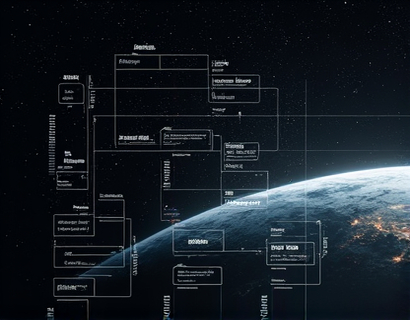AI-Driven Mathematical Breakthroughs: Empowering Scientists and Researchers with Advanced Solutions
The integration of artificial intelligence into the realm of advanced mathematics and data analysis has ushered in a new era of scientific discovery. This transformative shift is revolutionizing the way scientists and researchers approach complex problems, offering unprecedented tools to enhance accuracy, streamline processes, and accelerate groundbreaking findings. At the forefront of this revolution is an AI-driven platform designed to empower researchers by providing sophisticated mathematical tools and innovative solutions to intricate challenges.
The traditional methods of mathematical research and data analysis, while robust, often face limitations in handling the vast and complex datasets common in modern scientific inquiry. The advent of AI-driven technologies addresses these challenges head-on, enabling researchers to tackle problems that were previously intractable. By leveraging machine learning algorithms, deep learning techniques, and advanced computational methods, this platform significantly enhances the capabilities of scientists and researchers across various disciplines.
One of the primary advantages of incorporating AI into mathematical research is the ability to process and analyze large datasets with unprecedented speed and accuracy. Traditional computational methods can struggle with the scale and complexity of modern data, leading to inefficiencies and potential errors. AI-driven solutions, however, are designed to handle big data seamlessly, identifying patterns and insights that might go unnoticed by human analysts. This capability is particularly crucial in fields such as physics, biology, and economics, where complex systems and vast amounts of data are the norm.
Enhancing accuracy is another critical benefit of AI-driven mathematical tools. Human error, while often minimal, can have significant implications in scientific research. AI algorithms, on the other hand, can perform calculations with a high degree of precision, reducing the margin of error and ensuring more reliable results. This is especially important in areas like quantum mechanics and cosmology, where even the smallest inaccuracies can lead to vastly different conclusions.
The platform's ability to streamline research processes is equally transformative. By automating routine tasks and providing intuitive interfaces, researchers can focus more on the creative and analytical aspects of their work. This not only increases productivity but also fosters a more collaborative and innovative research environment. The platform's advanced tools can integrate seamlessly with existing research workflows, making it easy for scientists to adopt and benefit from these cutting-edge technologies.
Moreover, the platform's adaptability to various scientific domains ensures that it meets the diverse needs of researchers. Whether it's optimizing algorithms for computational fluid dynamics, enhancing statistical models in epidemiology, or providing real-time data analysis in materials science, the platform offers tailored solutions that drive progress in multiple fields. This versatility makes it an invaluable resource for interdisciplinary research, where the convergence of different scientific disciplines often leads to the most significant breakthroughs.
The impact of AI-driven mathematical tools extends beyond individual research projects to the broader scientific community. By accelerating the pace of discovery, these technologies help address some of the most pressing global challenges, from climate change to disease prevention. The ability to model complex systems, predict outcomes, and simulate scenarios with high fidelity enables policymakers and practitioners to make more informed decisions, ultimately leading to better outcomes for society.
Another significant advantage of AI in mathematical research is its capacity for continuous learning and improvement. Unlike static algorithms, AI systems can adapt and evolve based on new data and feedback, ensuring that the tools remain at the cutting edge of scientific advancement. This dynamic nature means that researchers can trust in the ongoing enhancement of their analytical capabilities, fostering a culture of continuous improvement and innovation.
The integration of AI into mathematical research also opens up new avenues for collaboration between humans and machines. While AI can handle the heavy computational lifting, human researchers bring creativity, critical thinking, and domain expertise to the table. This synergy allows for a more holistic approach to problem-solving, where the strengths of both humans and machines are leveraged to achieve optimal results. The platform facilitates this collaboration by providing tools that are easy to use and interpret, bridging the gap between complex algorithms and practical applications.
In addition to its technical benefits, the platform promotes accessibility in scientific research. By democratizing access to advanced mathematical tools, it levels the playing field for researchers from various backgrounds and institutions. This inclusivity is crucial for fostering a diverse and vibrant scientific community, where innovative ideas can emerge from a wide range of perspectives and experiences.
The future of AI-driven mathematical research holds immense potential. As AI technologies continue to advance, we can expect even more sophisticated tools and methodologies to emerge. The integration of quantum computing, for instance, could further enhance the computational power available to researchers, enabling the solution of problems that are currently beyond our reach. The platform is poised to be at the forefront of these developments, continuously evolving to meet the changing needs of the scientific community.
In conclusion, the advent of AI-driven mathematical tools represents a paradigm shift in scientific research. By providing scientists and researchers with advanced, accurate, and efficient solutions, these technologies are not only enhancing the quality of research but also accelerating the pace of discovery. As the scientific community embraces these innovations, we can look forward to a future where the boundaries of knowledge are pushed further than ever before, driven by the powerful synergy of human ingenuity and artificial intelligence.











































